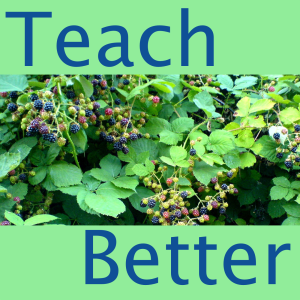
Podcast #14: Teaching as Coaching with John Bryan Starr
 2015-08-10
2015-08-10
Before he retired in Spring of 2015, John Bryan Starr taught two of the most highly regarded classes at Yale about the politics and policy surrounding public schools in the United States. These classes had a unique structure where students read and discussed the material outside class in small groups and continued their discussions in the classroom. In the words of one of his students, “You could just trust upon entering class every week that you were guaranteed a profound learning experience in those two hours.” In this episode of the Teach Better Podcast, John Starr shares his secrets.
The course materials for both of John’s courses on public schools are available on his web site.
You can subscribe to the Teach Better Podcast through your favorite podcast app or simply subscribe through iTunes if you don’t have one yet.
Show Notes0:00 ⏯ Intro
0:37 ⏯ Who are the teachers who have really made a difference?
1:47 ⏯ One student’s view of John Starr. Nurturing learning through discussion.
3:43 ⏯ Teaching about the public school system and curating the reading materials over the summer.
4:32 ⏯ Developing the course at Brown. Using a 200-page casebook as a reader. Before the class meets, the students read from the casebook then meet with a study group to discuss focus questions.
7:39 ⏯ Also before class meets, students write one-page papers on a question posed by the instructor.
9:05 ⏯ Flipping, double- or triple-flipping? Students can re-write their one-page paper, and the re-write is graded. Teaching using a protocol: questions, groups, timings, and rotating roles. “Freedom within a very tight structure.”
12:50 ⏯ When students see a problem from multiple perspectives, what happens to the teacher giving the “right” answer? The “answer” is more discussion.
14:22 ⏯ Ending meetings with a whole-group discussion. “A stable course with continuous improvement.”
16:48 ⏯ The midterm is an oral exam/tutorial. These are recorded and graded using a rubric.
17:47 ⏯ Working at the Annenberg Institute for School Reform and using K-12 techniques in higher ed: protocols for group work.
20:37 ⏯ Students grade themselves weekly on participation, as well as grading the facilitators, and the study group, and they also give feedback on the course. Students suggested peer feedback on the group work.
23:38 ⏯ Why an oral midterm? Getting to know your students, and getting to the end of their knowledge.
25:33 ⏯ For a final paper, the students create their own ‘case.’ Is a longer final paper a better paper?
28:29 ⏯ Students in John’s class can rewrite every piece of work (except the final research paper).
32:17 ⏯ Students ask the professor to change the topic–and he does. Using table tents to help students form groups. The students drive the topic.
34:17 ⏯ A wonderful retirement gift: a Facebook group of alumni from John’s courses.
35:14 ⏯ A seminar that’s in demand: 100 students sign up for a seminar. Starr filters the students with an online application and a scoring rubric.
38:48 ⏯ Why put in all this work? Seeing the learning. Why not lecture?
41:27 ⏯ How does an expert on Chinese politics come to teach about public school policy? Or: how half a job turns into one full-time job and two half-time jobs.
43:56 ⏯ Ted Sizer and the Coalition of Essential Schools.
47:18 ⏯ Teaching a course when you are not an expert and entering a new field at the age of 50.
48:24 ⏯ Memorable mistakes in teaching. “All I knew was what I’d seen:…truly dull seminars and large lecture courses….” Is the best lecture no lecture?
More Episodes
Create your
podcast in
minutes
- Full-featured podcast site
- Unlimited storage and bandwidth
- Comprehensive podcast stats
- Distribute to Apple Podcasts, Spotify, and more
- Make money with your podcast
It is Free
- Privacy Policy
- Cookie Policy
- Terms of Use
- Consent Preferences
- Copyright © 2015-2024 Podbean.com





